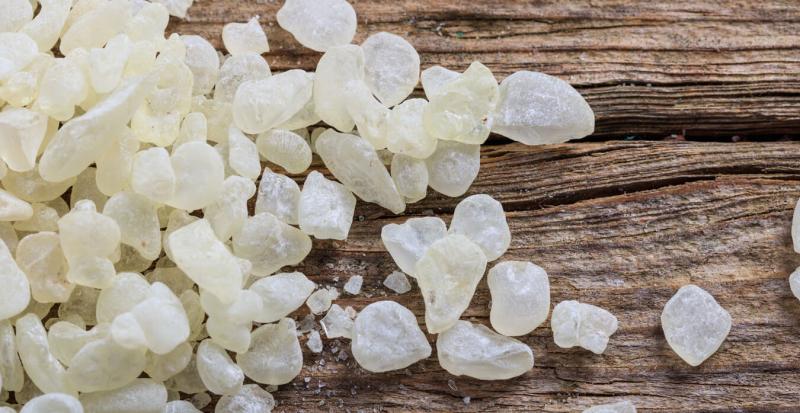Health Benefits of Mastic Gum
Mastic gum has long been recognized for its various health benefits. Derived from the mastic tree native to the Mediterranean, mastic gum contains powerful antioxidants and antibacterial properties. Numerous studies have shown mastic gum can help support digestive and oral health. Some of the main health benefits include:
- Reducing H. pylori infection - Studies show mastic gum can help reduce the bacteria H. pylori, a common cause of ulcers and stomach cancer. Its antibacterial properties help eliminate this infection in the stomach and digestive tract.
- Supporting gut health - The antioxidants in Mastic Gum have prebiotic effects that nourish beneficial gut bacteria. This helps promote a balanced microbiome and supports overall digestive health. Mastic gum is sometimes used to help relieve digestive issues like IBS.
- Promoting oral health - Mastic gum's antibacterial properties make it effective for supporting oral health when chewed. It can help reduce plaque, gingivitis and eliminate bad breath. Some research indicates mastic gum may help prevent dental cavities from forming as well.
Growing Demand in Personal Care Products
The well-established health benefits of mastic gum have led to rising demand from the personal care products industry. More companies have started incorporating mastic gum into oral care products, skin care creams and supplements.
For oral care, mastic gum is featured in natural toothpastes, mouthwashes and chewing gum. Its antimicrobial compounds support teeth and gums while freshening breath. Mastic gum extracts are also added to serums, creams and lotions for their antioxidant-rich formula. Studies show mastic gum may help promote clearer, brighter skin when applied topically.
In supplements, mastic gum provides antioxidants to support overall health. Popular formulations include mastic gum as a key ingredient to boost immunity, gut and oral health. The global wellness trend has been a major driver for increased mastic gum adoption in personal care lines. More consumers are seeking natural alternatives and gravitating towards brands featuring traditional wellness ingredients like mastic.
Production and Sourcing of Mastic Gum
Mastic gum is harvested by hand from the mastic tree using specialized tools. After making incisions in the tree's trunk, the gum resins bleed out and are collected. This labor-intensive process gives mastic gum its prized characteristics.
The majority of world production occurs within the Mastic producing area in southwestern Greece's Chios Island. This region has a protected designation of origin for its high-quality mastic gum. Trees can live over 200 years and begin resin production around 30 years of age, producing highest yields between 80-120 years old.
For companies procuring mastic gum, sourcing directly from cooperatives within the protected areas is ideal. This helps support local growers and ensures the raw material's authenticity. However, demand has been steadily increasing which threatens to outpace natural production levels from Greece.
Some larger brands have started cultivating mastic tree groves in other Mediterranean climates like Spain, California, and Australia to supplement supply. However, many argue the terroir profoundly influences mastic gum's composition, making the Greek variety superior in terms of phenolic content and medicinal properties. Sustainable harvesting and increasing plantation sizes will be crucial to satisfy growing demand for mastic gum worldwide.
Future Growth Prospects for Mastic Gum
Mastic gum appears poised for continued expansion, especially within beauty and wellness categories. The natural products industry has been a major driver of the ingredient’s popularity and serves as a significant growth market. As research further establishes mastic gum’s health benefits, more demand is expected from pharmaceutical applications as well.
Suppliers are investigating techniques like tree cloning and accelerated growth methods to boost production capacity sustainably. New cultivation regions may also emerge to diversify supply sources. The protected Chios mastic variety remains highly sought after, yet opportunities exist to tap broader markets through branded mastic extracts.
Overall, mastic gum’s established tradition, therapeutic properties and clean label appeal position it well for sustained growth. The ingredient aligns with key worldwide trends around natural health solutions and immunity support—areas projected to see heightened demand long-term. As awareness of mastic gum spreads, its role in various market sectors from supplements to cosmetics to food and beverage will likely continue expanding globally.
Get more insights on this topic: Mastic Gum
Explore More Articles: Neurological Biomarkers Market
